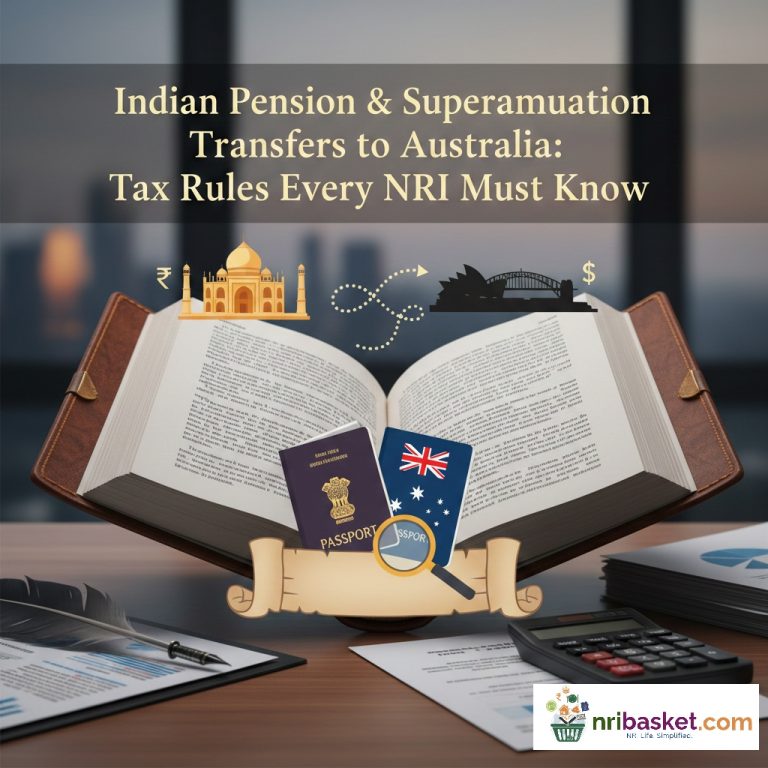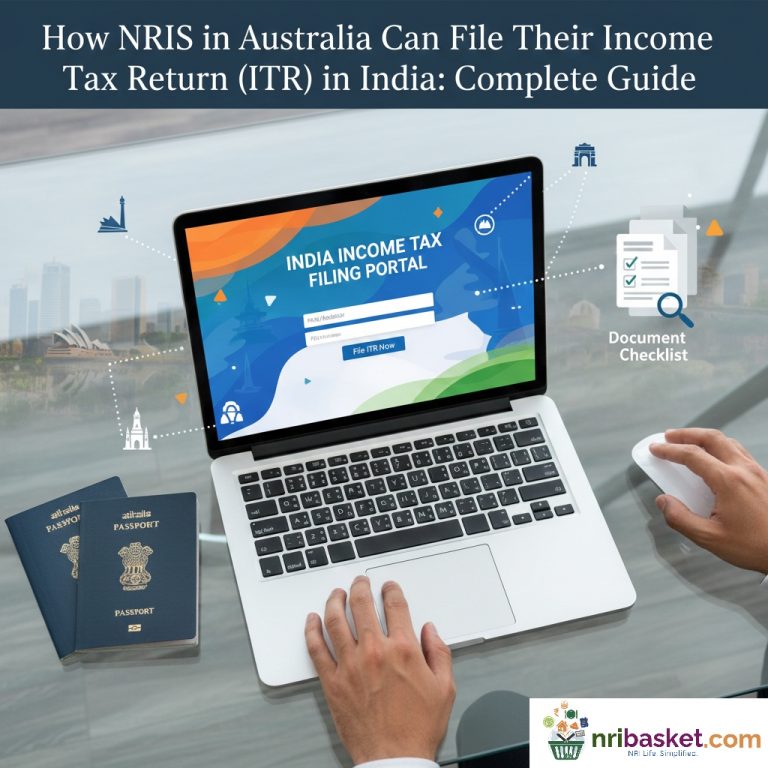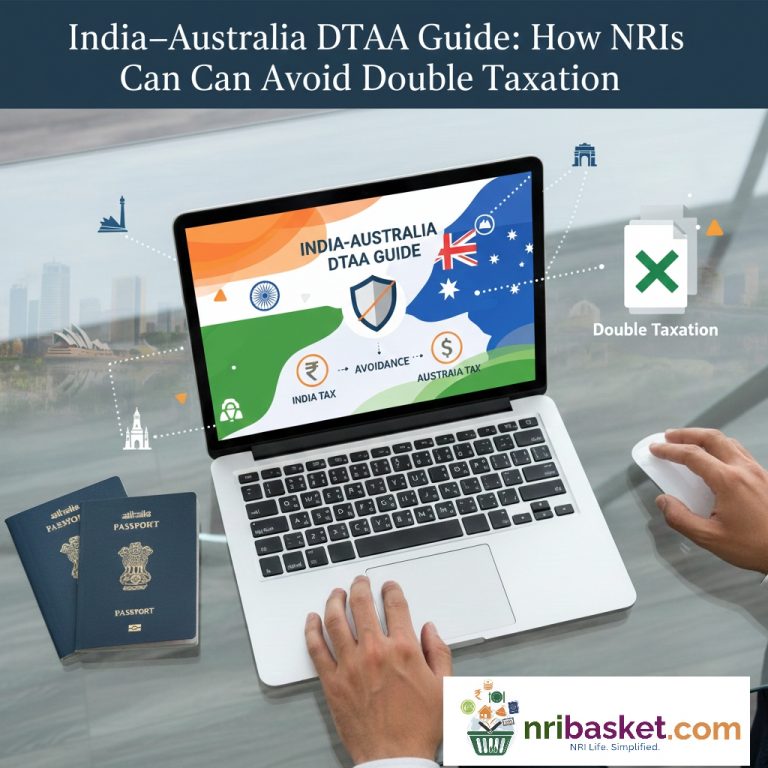
Reporting Indian Income on Canadian Tax Return
Step-by-step guide for NRIs on reporting Indian income (interest, rent, dividends) on your CRA tax return. Learn foreign income rules and tax tips.
The Ultimate Guide to Reporting Indian Income (Interest, Rent, Dividends) on Your CRA Return
Many Indian residents in Canada continue to earn income from India — whether it’s bank interest, property rent, or dividends from Indian companies.
The Canada Revenue Agency (CRA) requires all residents to report their worldwide income, including income earned in India.
This simple guide explains everything about reporting Indian income on your Canadian tax return.
Learn how to declare your earnings correctly, avoid double taxation through the India–Canada DTAA, and file your CRA foreign income declaration as an NRI or immigrant from India.
Have a question or want us to add your scenario?
Tell us what you need — we’ll update this guide and answer publicly so other NRIs can benefit. Your question may be featured in the next update.
Here are the most common FAQs to help you stay compliant, reduce tax stress, and ensure accurate reporting of Indian income to the CRA.
Long Answer: As a Canadian tax resident, you must report your worldwide income to the CRA. This includes interest from Indian banks, rent from property, and dividends from Indian companies.
Long Answer: Any income earned or received from Indian sources — including savings account interest, FD returns, property rent, or stock dividends — must be declared on your Canadian tax return.
Long Answer: You must file Form T1135 (Foreign Income Verification Statement) if your total foreign assets exceed CAD $100,000. This form helps declare foreign accounts, investments, and income from India.
Long Answer: The India–Canada Double Taxation Avoidance Agreement ensures you don’t pay tax twice on the same income. You can claim a foreign tax credit in Canada for taxes already paid in India.
Long Answer: Add your total Indian bank interest (from savings or FDs) under “Foreign Interest Income” on your T1 return. Convert it into Canadian dollars using the annual average exchange rate.
Long Answer: Report gross rent in CAD, then deduct expenses like property tax or maintenance. If tax was paid in India, claim it as a foreign tax credit while filing your CRA return.
Long Answer: Dividends from Indian companies are taxable in Canada. You may have already paid a 10–15% tax in India, but you can claim this amount as a foreign tax credit in your CRA filing.
Long Answer: The DTAA between Canada and India allows residents to claim credit for taxes paid in the other country, ensuring fair taxation and avoiding income being taxed twice.
Long Answer: Report the Indian tax you paid on Schedule T2209 (Federal Foreign Tax Credits). Attach proof of tax deducted in India (like Form 16A or TDS certificates) to support your claim.
Long Answer: Convert Indian rupees to Canadian dollars using the official Bank of Canada annual average exchange rate for that year. This ensures accurate income reporting.
Long Answer: Even though NRE interest is tax-free in India, it must still be reported as foreign income in Canada, as Canada taxes global income regardless of exemption abroad.
Long Answer: The DTAA allows you to claim a credit for the tax paid in India while filing in Canada. You’ll only pay the difference if Canada’s rate is higher.
Long Answer: Failing to declare foreign income can result in penalties and interest. It’s better to voluntarily disclose missed income using CRA’s Voluntary Disclosure Program (VDP).
Long Answer: Declare your gain in CAD using the exchange rate on the transaction dates. If you paid tax in India, claim it under the foreign tax credit section.
Long Answer: You must file Form T1135 if your total foreign assets — including Indian bank balances, FDs, or stocks — exceed CAD $100,000 anytime during the year.
Long Answer: Tax deducted at source (TDS) in India is eligible for credit in Canada under the DTAA. Keep all TDS certificates or Form 16A as evidence for CRA.
Long Answer: Any dividends or capital gains from Indian mutual funds must be reported in Canada. CRA taxes them as foreign investment income.
Long Answer: Although agricultural income is tax-free in India, Canadian residents must report it as foreign income because CRA taxes worldwide income.
Long Answer: Many Canadian tax professionals specialize in NRI or cross-border taxation and can correctly apply DTAA rules between India and Canada.
Long Answer: Under international agreements, CRA and the Indian Income Tax Department share financial information to detect undisclosed foreign income.
Long Answer: Pension received from India must be reported as foreign income in Canada. You can claim a foreign tax credit if Indian tax was deducted.
Long Answer: Report total Indian tax paid and attach these forms to claim foreign tax credits. This ensures you don’t pay double tax.
Long Answer: Even if your Indian income is tax-free or under the threshold in India, you must declare it in Canada, as CRA taxes based on residency, not source.
Long Answer: CRA allows using the average annual exchange rate for most income types, unless large one-time transactions require exact date conversion.
Long Answer: Report your portion of rent or capital gain in proportion to your ownership. Attach documents showing ownership ratio if required by CRA.
Long Answer: CRA may ask for Indian tax proof such as Form 16A, TDS slips, or ITR acknowledgments to verify foreign income or tax credits claimed.
Long Answer: CRA can charge up to $2,500 per year for failure to file T1135. Continuous non-filing may also trigger audits or reassessments.
Long Answer: If you missed reporting any Indian income, you can file an adjustment request using CRA’s “Change my return” service or the Voluntary Disclosure Program.
Long Answer: All amounts of foreign income must be reported, regardless of size. CRA doesn’t allow exemptions for small amounts earned abroad.
Long Answer: Maintain an Excel sheet or folder with Indian bank statements, TDS certificates, property rent receipts, and exchange rates. This makes annual CRA reporting stress-free.




